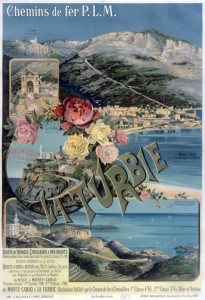According to SmartBlog on Workforce, this presentation was a hit at the recent annual conference of SHRM (Society for Human Resource Management):
10 Ways To Jazz Your Recruiting and Employee Self-Service Web Sites: Learn from Top Tourism Sites
Description: “Attract and retain top talent through your recruiting Web site and employee portal using the design concepts from the world’s top tourism sites. These sites offer rich, interactive and personalized experiences-the same keys that will boost the effectiveness of your online HR presence. Mr. Rotella will share strategic elements to enhance your Web site.” Presenter: Joe Rotella, chief technical officer, Delphia Consulting
As of now it appears you will have to time-travel back to the June meeting in order to get the presentation in toto, and I didn’t find further information in the SmartBlog post (or on Rotella’s site) concerning the proposed parallel between recruiting sites and tourism sites. But my fantasy of what that means is pretty simple: Tourism sites are designed to make people want to visit [wherever]. A recruiting site should be designed to make people want to work at [wherever].
Simple, maybe. Important? Definitely.
The Smartblog summary included a few highlights from the presentation, selected by poster Mary Ellen Slayter. Here are three of her descriptions–and these points would definitely help in making the corporate Career site more like “invitation to the perfect cruise” and less like “here’s some stuff about jobs at our company.”
- Get rid of your FAQ. “It’s the junk drawer” of the Web, Rotella said. You should be incorporating that information into your regular content.
- Know what type of content appeals to your users. And be particularly cautious about using glitzy flash applications. People usually skip them, he said. “Why do you want to pay me to build you one?”
- Avoid using generic addresses for submitting questions or resumes. “People want to talk to people, not ‘hr@’.”
Some thoughts:
Two thumbs up for the point about email addresses!! This is one the lowest-hanging items in the fruit basket (i.e., a cheap and easy improvement), yet an amazing number of companies overlook the opportunity.
Two more thumbs up regarding Flash. Seriously–meaningless motion just looks like filler nowadays. The new has worn off, and in these serious times, most visitors do not want to spend minutes watching a company romance flick (or even a company action/adventure flick). The bigger point here: Think about what your actual target audience would actually want to see and do on your site. Here again, an amazing number of companies just don’t take that seemingly obvious step.
But about the FAQ . . . I can’t entirely agree. “Don’t use it as a junk drawer” is spot-on advice. It shouldn’t be a miscellany or an afterthought! But that doesn’t mean the FAQ can’t serve a useful function. FIRST, be sure that every item of needed information is included appropriately in the part of the site where it fits. THEN, organize and summarize important information and links in an FAQ-type format that will be genuinely helpful to visitors.
Bottom line: The problem is not the FAQ per se. The problem is using it in a lazy way!
Cynthia Giles has followed a serpentine career path from academia to publishing to marketing and design to information technology and corporate communications. There’s plenty of detail about this journey at www.cynthiagiles.com, but briefly--the common theme has been ideas, and how to present them effectively. Along the way, she became an accidental expert on data warehousing and business intelligence, and for the past ten years she has combined corporate contracting with an independent consulting practice that focuses on marketing strategy for smaller businesses and non-profits.
Having spent quite a bit of time looking for work, and anywhere from two weeks to two years inside a wide variety of American companies—she has given much thought to what works (and what doesn’t) when it comes to creating a great employment fit.



